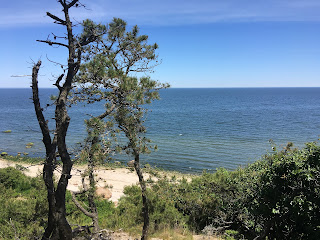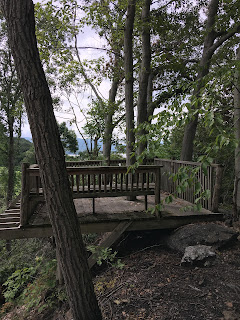It has been more than a decade since I wrote about race (the brownie sizzles
here).
In these 10+ years,
- I have grown wiser (due to lack of evidence suggesting otherwise); My hair has evolved into a new color (for better or worse); I have experienced two bitter cold Canadian winters, the cosmopolitan life of Singapore, a failed startup in India and most recently, the Corona virus in the US (well, across the globe)
- I have lived in
- A multi cultural university locality in 'French first' Montreal, where you are welcome with open arms the moment you attempt speaking in French,
- A predominantly Asian Singapore, where my Singaporean Physio and I got into a debate over Chinese vs Singaporean identities,
- A tier II Indian city called Pune where my wife had to say "Mein Japani hoon" to identify herself as Japanese (the phrase translates to "I am Japanese"),
- The cultural hotspot of New York / New Jersey where people were too busy with their lives until the virus struck and made people think.
Each one of these experiences had racial underpinnings that gave me perspective. Be it Montreal where, without French, you are treated like an outsider or Singapore where Singaporeans uniquely identify themselves or India where anyone a small nose is called a "Nepali" or "Chinese", each one of these experiences showed me the impact of conscious and unconscious bias against people of certain characteristics.
The recent events in the US have made me think about the future of humanity as a whole. And, the Black Lives Matter (BLM) movement is just the tip of the iceberg - across the world, we have systemic issues of discrimination within castes, races, colors, religions and countries. Makes one wonder if we are a self destructing race and
Musk, foreseeing this, is aggressively pursuing another planet to destroy.
History, in the absence of a better guiding post, acts as a good reference point to gain perspective. Machines evolve as they accumulate more history. However, we seem to be going backwards with time. Makes machines better candidates for evolution than us - Maybe
Darwin knows better.
Nevertheless, let us try to understand race by looking back at history.
4,000 Million (Mn) years ago - Life on Earth
~500 Mn years ago - Animals
~200 Mn years ago - Mammals
~50 Mn years ago - Monkeys
~10 Mn years ago - Close human relatives
~200,000 (K) years ago - Homo Sapiens
~50K years ago - Modern humans emigrate from Africa
As we can see, we have not been here for more than a couple of hundred thousand years and in the larger scheme of things, we have done more damage than potentially any other species. In the most recent 50,000 years, as humans migrated to different parts of the world, Darwin's
natural selection took over and ensured that we adapt to the new environments.
Evolution since the grand migration
We all know that human skin color is affected by, among other things, the amount of melanin. As humans migrated from higher UV exposure (near equator) to farther areas, lighter skin types evolved.
And, with the invention of agriculture ~12,000 years ago, we started settling down as there was no more a need for a nomadic lifestyle. This resulted in a change in human genome which altered height, immunity, skin color etc. over a period of time.
As humans moved into colder climes, the noses evolved to become smaller to accommodate colder, drier air which irritates the nasal membranes.
Similar changes in body structure, immunity came across as we adjusted to the new environments. This was natural selection working its way through.
The most recent history revisited
With the above background, now, let us look at the events that have taken place in recent history.
1700s
- 1707 - United Kingdom of Britain was formed. This was a key event that resulted in colonization of the world
- 1757 - Beginning of the British empire in India
- 1776 - American declaration of Independence; America celebrates 244th anniversary in a unique set of circumstances this week.
- 1789+ - French revolution that leads to Napoleon becoming the First Consul
Overall, the 1700s set the foundation for colonization with France, Britain and Russia leading the way.
1800s
- Across US and Europe, show of power continues.
- US executes Louisiana Purchase, and doubles its territory with more acquisitions.
- In Europe, Napoleon extends his reign until 1814 when France is defeated and Napoleon is exiled.
- 1824 - Mexico gains freedom from Spain
- 1833 - Slavery is abolished in the British Empire
- 1861 - US Civil war begins
- 1867 - Japan ends 675 year old Shogun rule
- 1868 - Civil rights granted to blacks
Throughout the 1800s, there is debate on equal rights and slavery and significant progress is made.
- 1914-1918 - First World War
- 1919 - Mahatma Gandhi initiates his non violence movement against the British
- 1930s - The great depression
- 1934 - Hitler becomes Fuhrer
- 1939-45 - Second world war
- 1960s - Unrest in the US over black rights. Martin Luther King Jr. rises as a leader but is assassinated in 1968.
- 1969 - Gay Rights Movement in New York
This century saw numerous conflicts and wars, fights for freedom resulting in the end of colonization and birth of new, free countries. Significant progress was made with respect to equal rights, be it for women, African Americans or gays. This century also saw the rise of great leaders and visionaries like Martin Luther King Jr, Mahatma Gandhi, Nelson Mandela, Mother Teresa etc.
2000s
We experienced the rise of the internet, a force that changed the order of life on this planet. Other key events include 9/11 attack on the World Trade Center, the financial crisis of 2008 and an overall economic boom across the world.
Putting it all together
Agree, that was a lengthy history - but it was necessary.
We evolved from simplistic bacteria to very complex homo sapiens. And then, with the invention of agriculture, we transitioned from nomadic beings to stationary settlers. And post that, with all this time on our hands, we started inventing things to improve our lives. We ventured into other geographies, created colonies and subsequently, gave birth to countries with bubbling economies. And, while we were busy doing all this, evolution was working its own vicious plot in the background - it created variants of homo sapiens that were better suited for survival.
If we look at the most recent couple of hundred years, we have transitioned from slavery and colonialism to a mostly democratic bunch of diverse countries. Rights for women, people of color, and people of various sexual orientations have significantly improved during this period.
While the recent events in the US do indicate that criminal justice has lagged behind in treating blacks fairly (RIP George Floyd, Breonna Taylor, Ahmaud Arbery), there have been great strides forward in terms of education (
~24% under 25 complete their bachelors), representation of African Americans in the US congress (
~11%) and other areas here in the US. The rise in education will lead to a rise in wealth and help bridge, to some extent, the income inequality that exists today. It might be a good idea to set diversity targets for corporations, local governments based on the population mix of the region in which they operate. I am sure there are better brains working on this one.
Let us now take a step back and consider the whole of humanity - somewhere along the process of evolution, we lost the ability to accept differences. We have so many examples in recent history but we somehow find it difficult to learn - Shia muslims fighting Sunnis in the middle east, scheduled castes treated poorly in India, China angering neighbors with petty border issues, natives and indigenous tribes being sidelined etc. And now, most recently, the Black Lives Matter protests to fix the criminal justice system.
All these wars, conflicts, protests must drive home the point that we don't gain much by fighting against one another. We would be better off if we accept the natural order of things i.e. the diversity arising out of evolution and work towards embracing differences. If these BLM protests morph into a movement that addresses the perennial issue of our collective inability to accept diversity, it would be a giant leap forward. And, once that happens, Darwin would be a happy man!
--------------------------------------------
References:


























